Brazil Home Loan Market Size
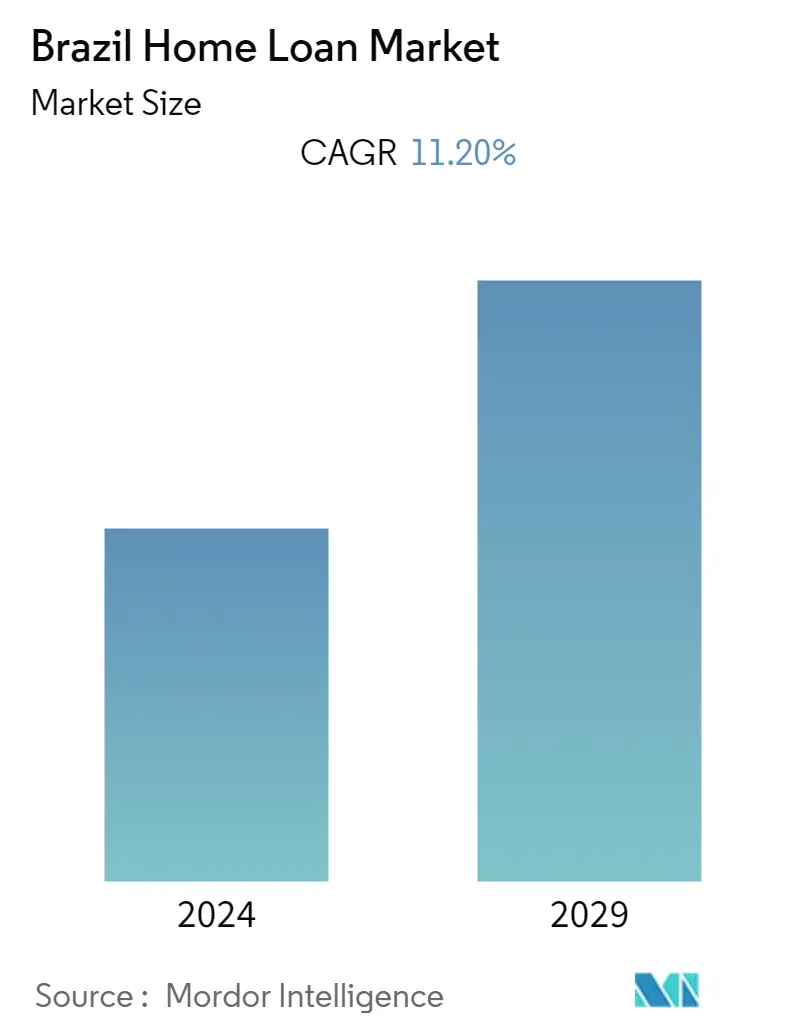
| Study Period | 2020 - 2029 |
| Base Year For Estimation | 2023 |
| Forecast Data Period | 2024 - 2029 |
| Historical Data Period | 2020 - 2022 |
| CAGR | 11.20 % |
| Market Concentration | Medium |
Major Players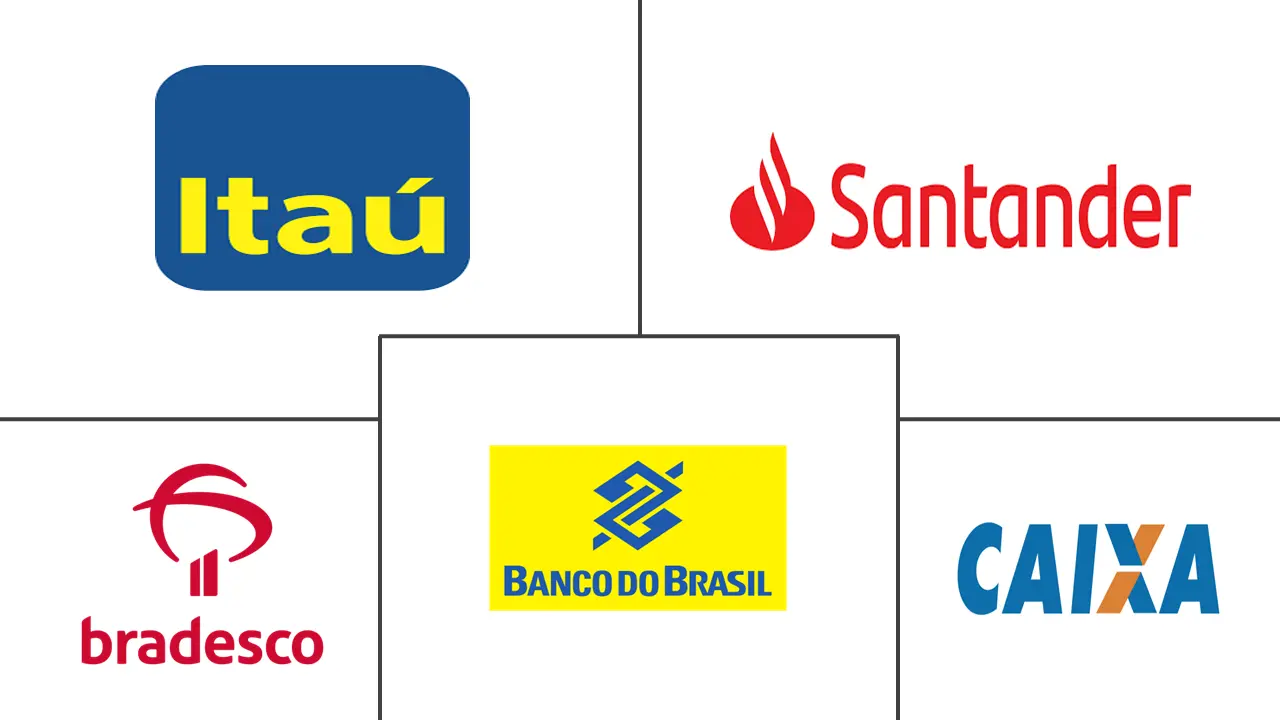
*Disclaimer: Major Players sorted in no particular order |
Brazil Home Loan Market Analysis
The Brazil Home Loan Market is valued at USD 40.9 billion and is expected to register a CAGR of 11.2% during the forecast period.
The outbreak of the COVID-19 pandemic triggered record job losses and a spike in home loan defaults, creating a potentially treacherous road ahead for borrowers and lenders. There was a dramatic drop in interest rates that sparked a mortgage boom in Brazil, making home ownership feasible for thousands and tempting to trade up or splash out on a house in the country or by the beach. Brazil's mortgage market remains in its infancy, with outstanding home loans totaling 720 billion reais (USD 135 billion), or around 10% of GDP, which is less than half the ratio in Chile and a fifth of the share in the U.S.
Brazilian mortgage lending registered its second-best in May on record, with loans totaling over USD 17 billion. The figure is almost 50% more than April and the highest so far this year. Compared to the previous 12 months, home loans have risen by 18% in the year. The Brazilian Central Bank has been steadily increasing base interest rates since late last year in an attempt to bring inflation into check. However, the rate hikes have not deterred buyers, as the latest mortgage figures show. The strong underlying demand in the market and favorable loan packages from Brazilian banks continue to drive the market. Demand is particularly acute in Northeast Brazil, where 40% of consumers are looking to buy a home. The mortgage lending increase in Brazil continued to show high rises in the first eight months of the year. Between January and August, the value of loans totaled USD 136,9 billion, up 107.7% in the year. Mortgages in August alone reached a value of USD 21.01 billion, an increase of 11.8% in July and of 79.2% in the year.
Brazil Home Loan Market Trends
Increase in High End Property Sales
Luxury property sales fared well in Brazil during 2022 on the back of demand for higher quality homes with more space and communal facilities. The market is expected to continue to boom during 2023, particularly as new launches incorporate the latest technology in design and architecture. After a spectacular rise in launches last year, high-end property in Brazil was set for more of the same in 2022. The latest Confidence Index for residential real estate offers high expectations for more launches and purchases of land over the year. As a result, prices should rise in tandem, particularly as the values for luxury property remain well below international levels.
The luxury real estate market in Brazil has grown significantly in recent years, and we expect it to continue to grow in 2023. One of the main factors that stimulated the start of this market in Brazil was the increase in middle-class income and the devaluation of the Real against the dollar. This allowed more people to invest in luxury real estate and enjoy the beautiful view of Rio de Janeiro and other cities in the country. Moreover, tourism in the country has also contributed to the luxury real estate market growth, as many foreign tourists are looking to invest in real estate.
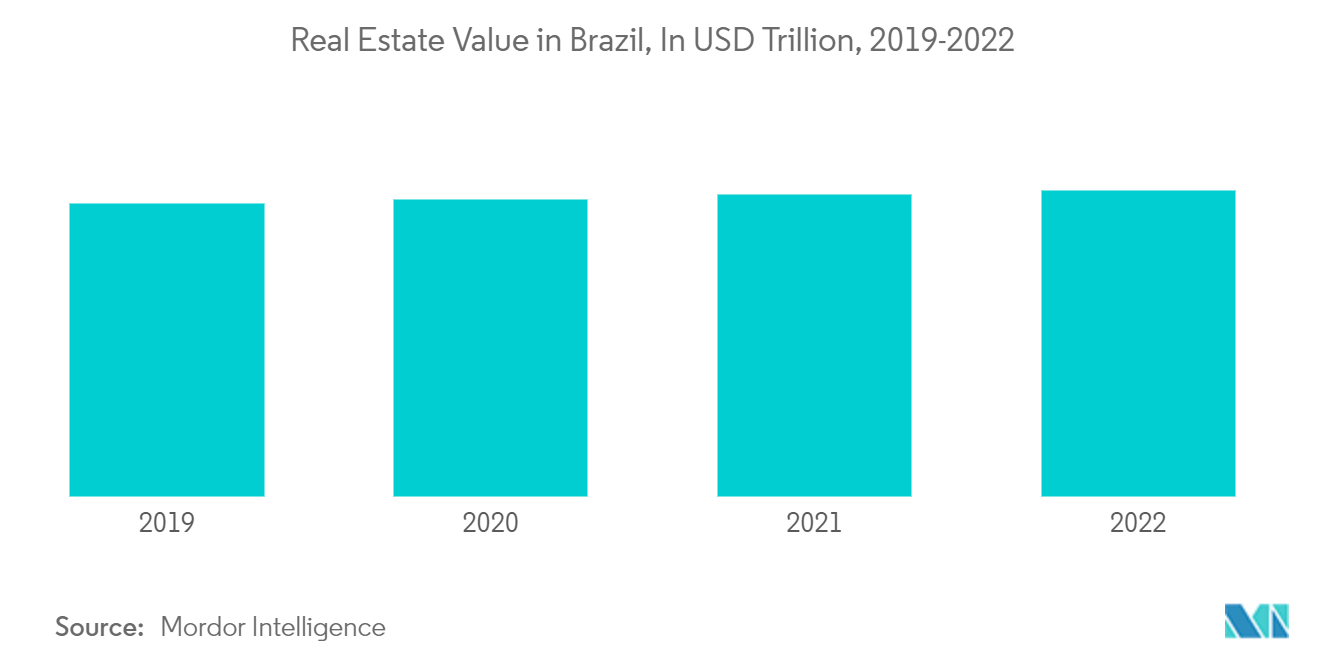
Growth in Digital Banks
Fintechs and digital banks expanded their share in the Brazilian credit market during the second half of 2022. Digital banks now represent roughly 6% of all loans to individuals in Brazil. That is up from 4.8% by the end of 2021 and virtually nothing five years back. Albeit from a low base, digital banks have been the sector growing the loan book the most since 2020. It grew at a 40% pace during 2022, doubling the system's average. During the pandemic, neobanks even saw records of 100% growth rates.
Neobanks in Brazil are finally making inroads into the country's USD 1 trillion credit market. These banks now represent almost 6% of all loans to individuals in Latin America's largest economy. Over the past decade, digital banks have spawned in Brazil, rising to challenge incumbents at their own game. With lower fees and user-friendly interfaces, they have succeeded widely in drawing clients. Nubank now boasts over 80 million customers in the region. Others, such as Banco Inter, PicPay, and Mercado Pago, have also signed up clients in the millions. While many digital lenders thrive at acquisition and cost to serve, most still fail to make a dent in the country's highly profitable yet extremely competitive credit markets.
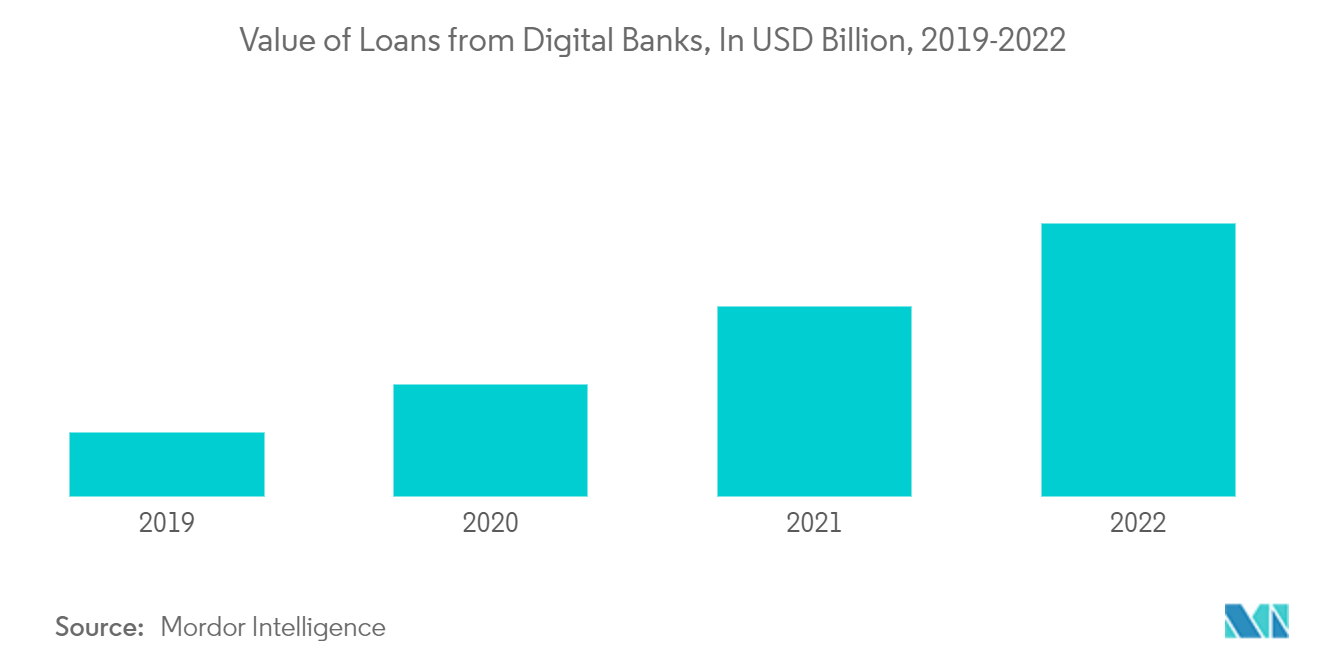
Brazil Home Loan Industry Overview
The Brazil Home Loan Market is consolidated, with few players dominating the market. Some of the major players in the market are Itaú Unibanco (Itaú BBA e Rede), Santander, Banco Bradesco, Banco do Brasil, and Caixa Econômica Federal.
Brazil Home Loan Market Leaders
-
Itaú Unibanco (Itaú BBA e Rede)
-
Santander
-
Banco Bradesco
-
Banco do Brasil
-
Caixa Econômica Federal
*Disclaimer: Major Players sorted in no particular order
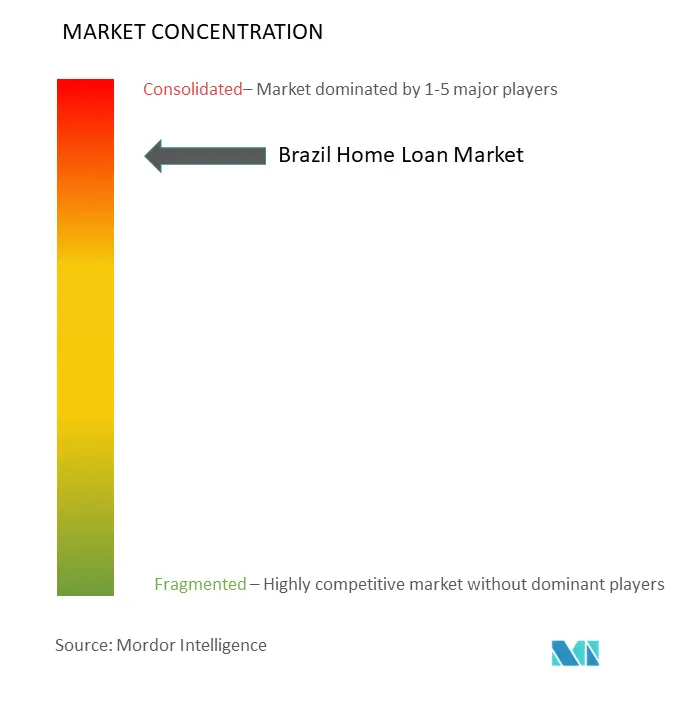
Brazil Home Loan Market News
- August 2022: Brazilian lender Banco Bradesco SA subsidiary Bradescard has agreed to acquire Mexico's Ictineo Plataforma SA in a bid to offer digital accounts in Latin America's second-largest economy. Bradesco said the acquisition will allow the bank to enter the banking retail area, offering digital accounts, payroll loans, and investment accounts.
- April 2022: Brazilian banking group Itaú Unibanco has acquired a 12.82% stake in Rede Agro Fidelidade e Intermediação S.A. (Orbia) to expand its operations. The deal is aimed at expanding Itaú Unibanco's footprint by giving it access to Orbia's customer base and allowing the bank to offer them easy access to credit.
Table of Contents
1. INTRODUCTION
- 1.1 Study Assumptions and Market Definition
- 1.2 Scope of the study
2. RESEARCH METHODOLOGY
3. EXECUTIVE SUMMARY
4. MARKET INSIGHTS AND DYNAMICS
- 4.1 Market Overview
-
4.2 Market Drivers
- 4.2.1 Economic Growth
- 4.2.2 Increased Mortgage Options
-
4.3 Market Restraints
- 4.3.1 Interest Rate Volatility
-
4.4 Industry Attractiveness - Porter's Five Forces Analysis
- 4.4.1 Bargaining Power of Suppliers
- 4.4.2 Bargaining Power of Buyers
- 4.4.3 Threat of New Entrants
- 4.4.4 Threat of Substitutes
- 4.4.5 Intensity of Competitive Rivalry
- 4.5 Insights on Current Trends and Innovations in the Market
- 4.6 Impact of COVID-19 on the Market
5. MARKET SEGMENTATION
-
5.1 By Source
- 5.1.1 Bank
- 5.1.2 Housing Finance Companies (HFC's)
-
5.2 By Interest Rate
- 5.2.1 Fixed Rate
- 5.2.2 Floating Rate
-
5.3 By Tenure
- 5.3.1 Upto 5 Years
- 5.3.2 6 - 10 Years
- 5.3.3 11 - 24 Years
- 5.3.4 25 - 30 Years
6. COMPETITIVE LANDSCAPE
- 6.1 Market Concentration Overview
-
6.2 Company Profiles
- 6.2.1 Itaú Unibanco (Itaú BBA e Rede)
- 6.2.2 Santander
- 6.2.3 Banco Bradesco
- 6.2.4 Banco do Brasil
- 6.2.5 Caixa Econômica Federal
- 6.2.6 Nubank
- 6.2.7 Creditas
- 6.2.8 Nomad
- 6.2.9 Poupex
- 6.2.10 FinanZero*
- *List Not Exhaustive
7. MARKET OPPORTUNITIES AND FUTURE TRENDS
8. DISCLAIMER AND ABOUT US
** Subject To AvailablityBrazil Home Loan Industry Segmentation
The home loan market refers to the financial sector that deals with the origination, servicing, and trading of loans used to finance residential properties. It is a specific segment of the broader mortgage industry. In the home loan market, lenders provide funds to individuals and families to purchase homes or refinance existing mortgages. The Brazil Home Loan Market is segmented By Source (Bank and Housing Finance Companies), By Interest Rate (Fixed Rate and Floating Rate), and By Tenure (Up to 5 Years, 6 - 10 Years, 11 - 24 Years, and 25 - 30 Years). The report offers market size and forecasts in value (USD) for all the above segments.
| By Source | Bank |
| Housing Finance Companies (HFC's) | |
| By Interest Rate | Fixed Rate |
| Floating Rate | |
| By Tenure | Upto 5 Years |
| 6 - 10 Years | |
| 11 - 24 Years | |
| 25 - 30 Years |
Frequently Asked Questions
What is the current Brazil Home Loan Market size?
The Brazil Home Loan Market is projected to register a CAGR of 11.20% during the forecast period (2024-2029)
Who are the key players in Brazil Home Loan Market?
Itaú Unibanco (Itaú BBA e Rede), Santander, Banco Bradesco, Banco do Brasil and Caixa Econômica Federal are the major companies operating in the Brazil Home Loan Market.
What years does this Brazil Home Loan Market cover?
The report covers the Brazil Home Loan Market historical market size for years: 2020, 2021, 2022 and 2023. The report also forecasts the Brazil Home Loan Market size for years: 2024, 2025, 2026, 2027, 2028 and 2029.
Brazil Home Loan Industry Report
Statistics for the 2024 Brazil Home Loan market share, size and revenue growth rate, created by Mordor Intelligence™ Industry Reports. Brazil Home Loan analysis includes a market forecast outlook to for 2024 to 2029 and historical overview. Get a sample of this industry analysis as a free report PDF download.



